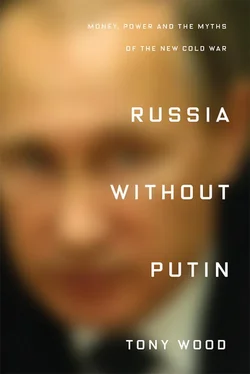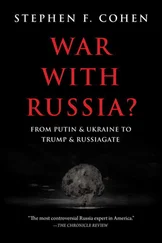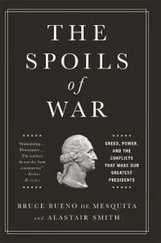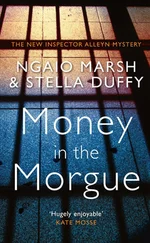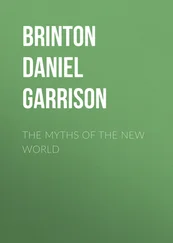More importantly, however, the focus on the siloviki draws attention away from other, equally significant changes in the configuration of the elite. As Kryshtanovskaia and White themselves record, between 1993 and 2003 ‘representatives of big business’ came to account for an increasing share of the country’s political leadership – rising from zero to one-fifth of government ministers. {37} 37 Olga Kryshtanovskaya and Stephen White, ‘The Rise of the Russian Business Elite’, Communist and Post-Communist Studies , 38 (2005), pp. 302–303.
By the end of the century, two successive ministers of fuel and energy had been recruited from oil companies, and a whole section of Putin’s early appointments to the presidential administration came directly from Alfa-Bank.
The same trend applied at the regional level: in the 1990s, only a few businessmen had been heads of federal subunits, but after 2000, examples multiplied, starting with Roman Abramovich taking on the governorship of frozen Chukotka, the country’s easternmost region. By 2002, almost a third of the Federation Council – the legislature’s upper house, comprising representatives from all of Russia’s federal components – had come from private enterprise. {38} 38 Barnes, Owning Russia , pp. 177–78 and Kryshtanovskaia, Anatomiia rossiiskoi elity , pp. 356–57.
Sometimes the head of a region was also the executive of its largest company, as in the case of Aleksandr Khloponin, chairman of Norilsk Nickel, who ran Krasnoyarsk region from 2002 to 2010. As Kryshtanovskaia and White themselves observed in 2009, ‘the tendency for regional capital and government to merge has become increasingly powerful’: representatives of financial-industrial groups were moving into elected office in the towns, while state-farm managers came to dominate the countryside. {39} 39 Kryshtanovskaya and White, ‘Rise of the Russian Business Elite’, p. 305.
At the same time, while many figures from business were shifting into the sphere of government, there was also a good deal of movement in the other direction: businesses were recruiting from the ranks of government ministries. In the 1990s, a large part of the post-Soviet business elite was drawn from among the nomenklatura and ‘red directors’. The difference now was that figures leaving the state apparatus were doing so to join existing business concerns rather than set up new ones. By 2001, an estimated fifth of the business elite had previously been state officials. {40} 40 Kryshtanovskaya and White, ‘Rise of the Russian Business Elite’, pp. 300–301.
This two-way traffic between the worlds of the state and of private enterprise will no doubt be entirely familiar to many readers: the same kind of revolving door notoriously sustains elites around much of the globe, enabling them to waltz effortlessly between the boardrooms of Goldman Sachs and the corridors of power in Washington, London, Rome and elsewhere. Russia’s government and business became similarly interwoven, leading to the emergence of an increasingly hybrid elite, able to hop amphibiously between domains that were formally separate but which for them, in practice, were one. In 2007, after an internal tussle between different security services burst into the open, [3] FSB agents had arrested a high-level officer of the FSKN in connection with a bribery investigation; the arrested man countered by accusing top FSB agents of involvement in a smuggling and tax-evasion scheme, which he had apparently been investigating.
the then head of the anti-drug agency, Viktor Cherkesov, published an article titled ‘We Should Not Allow Warriors to Turn into Traders’. {41} 41 Viktor Cherkesov, ‘Nel’zia dopustit’, chtoby voiny prevratilis’ v torgovtsev’, Kommersant , 9 October 2007; on the ‘Tri Kita’ case, see Ledeneva, Can Russia Modernise? , pp. 182–188.
Ostensibly a principled plea to keep business and state service separate, Cherkesov’s unusually public intervention was disingenuous in the extreme: its real purpose was to call a truce between arms of the state that were already at odds over their business interests. ‘Traders’ and ‘warriors’, and indeed businessmen and statesmen more generally, had long since become indistinguishable categories.
The increasingly close overlap between the realms of state and business had severe consequences for the rest of the population. It meant above all that the elite could deploy the formal power of the state for personal ends. State functionaries used entirely legal means – tax inspections, bankruptcy laws and property transfer documents – to gain control of companies, banks, oil fields. (The Russian elite can be intensely legalistic in its felonies, in the spirit of the proverb: ‘For our friends we have everything; for our enemies, the law.’)
As policymaking and the pursuit of profit bled into one another, a range of malign symptoms began to manifest themselves across Russian society. In addition to practising reiderstvo on businesses and on each other, state functionaries at all levels squeezed the populace for cash. The sums involved ranged from the relatively minor amounts demanded by traffic cops to the levies of $1,000 per month ‘lifted’ from small businesses by government agencies. As for high-end political corruption, in the mid-2000s, amendments to existing legislation cost $200,000; for $500,000 you could get your own law custom-made; a false budget entry cost 4 per cent of the sum involved. {42} 42 Ledeneva, Can Russia Modernise? , pp. 99–100.
Informally, it came to be understood that certain state personnel would ‘look after’ specific sectors or companies, which became known as poliany , ‘grazing grounds’. The echo of the early modern Muscovite institution of kormlenie , ‘feeding’, which licensed nobles to enrich themselves at the expense of designated territories, was one reason why Russians drew parallels between the current elite and that of Ivan the Terrible.
To some extent, corruption helped the Putin system to function, outsourcing some of the costs of government onto the population even as it fostered cohesion within the elite itself, bound to each other by complicity in illicit self-enrichment. {43} 43 Thanks to Sean Guillory for this point.
It was bad for everyone else, of course. Corruption metastasized into almost every sphere of life. Perhaps the most obvious sign of its pervasiveness was the entry into everyday speech of its distinctive lexicon. Most Russians could easily have told you the difference between raspil, otkat and zanos: raspil , ‘sawing off’, refers to money made through fraudulent state contracts; otkat is a kickback; zanos is a regularized cash tribute, either a flat fee or a proportion of turnover. {44} 44 Ledeneva provides a helpful glossary in Can Russia Modernise? , pp. 273–80.
In December 2010, anti-corruption campaigner Aleksei Navalnyi even launched a website called RosPil, where users could scrutinize state contracts for the inevitable rake-offs. That same month, word leaked out about a 74-hectare estate by the Black Sea reportedly built for Putin himself, complete with pseudo-neoclassical palace, amphitheatre, sports complex and three helipads. The news was scandalous but unsurprising: aerial shots of the enormous mansions belonging to government officials and well-connected biznesmeny had long been a staple of blogs and Twitter feeds.
The Russian elite were not keeping their wealth all for themselves, though: they shared some of their good fortune with their relatives. Over the years, investigative journalists in Russia have repeatedly mapped out a web of nepotistic connections spanning the worlds of money and power. In 2007, for instance, Kommersant-Vlast ’ magazine listed three dozen examples of family relationships in government structures and state-owned enterprises – fathers and children, siblings, husbands and wives, in-laws, uncles and nephews. Ten years later, Meduza carried out a similar investigation. The first of these reports found that the two sons of Nikolai Patrushev, head of the FSB from 1999 to 2008, were respectively vice-president of the majority state-owned Vneshtorgbank and an adviser to the board of the state oil company Rosneft. By 2017, one had moved to Rossel’khozbank while the other was ensconced at Gazprom. Igor Sechin’s daughter Inga was married first to the son of Vladimir Ustinov, prosecutor general and then minister of justice, and later to a former vice president of VTB bank.
Читать дальше
